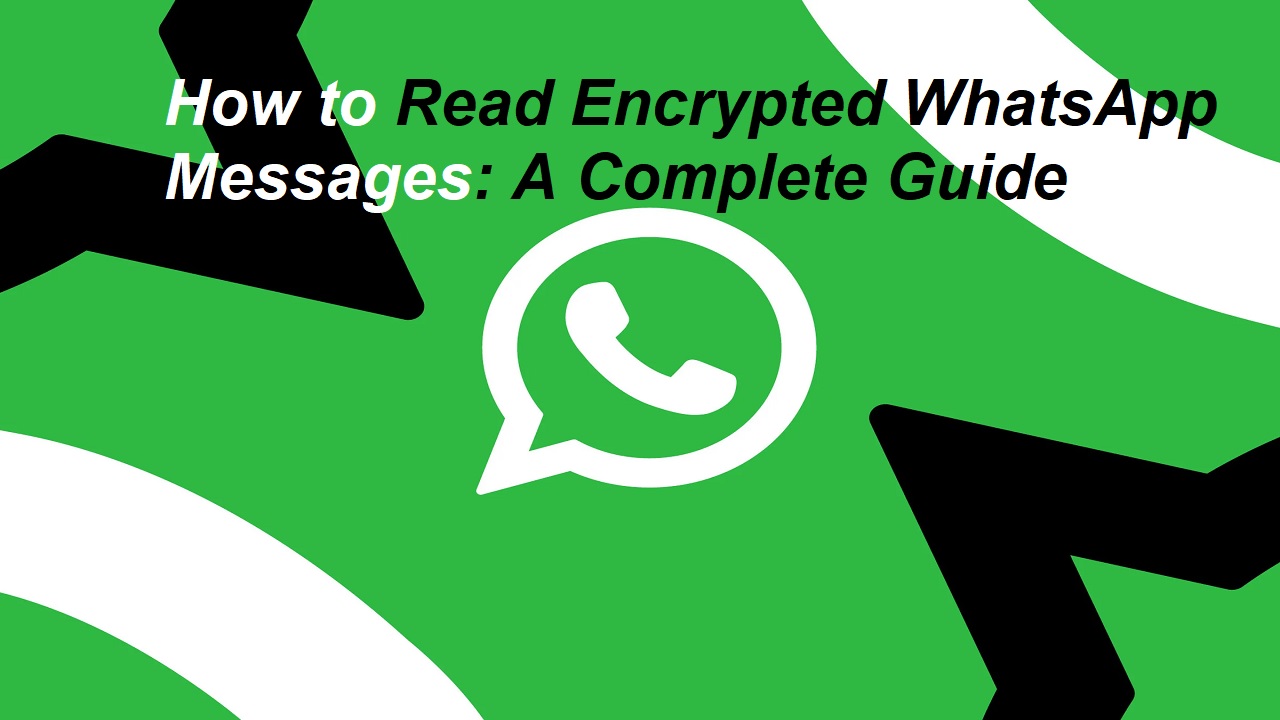In the contemporary digital landscape, the security of messaging applications has become paramount. Among these applications, WhatsApp stands out with its end-to-end encryption feature, claiming to provide a secure communication channel for its users. However, the question remains: how safe are encrypted WhatsApp messages? This inquiry necessitates an analytical deep dive into the mechanisms of encryption, potential vulnerabilities, and the implications of such technology on user privacy.
End-to-end encryption (E2EE) ensures that messages are scrambled into an unreadable format before they are transmitted and can only be deciphered by the intended recipient. In this process, the only keys capable of unlocking the content are held by the communicating parties—an impressive feat that ostensibly guarantees message confidentiality. This encryption paradigm employs advanced algorithms, including the Signal Protocol which is heralded for its robustness.
However, while encryption fortifies the data in transit, it does not render it impervious to all forms of interception or exploitation. Firstly, it is vital to acknowledge that the application can only safeguard information that enters and exits its domain. Messages stored on the device or in the cloud may still be vulnerable. If an unauthorized individual gains access to a user’s mobile device, they could potentially read messages directly, circumventing encryption.
Moreover, while end-to-end encryption is designed to resist surveillance from both external interlopers and the service provider itself, the risk of human error remains a prominent concern. Users are typically the weakest link in the security chain. Phishing attacks, for instance, can lure individuals into divulging sensitive information or installing malware. Once malware infiltrates the device, it can monitor communications, effectively bypassing encryption.
Another avenue of analysis pertains to the role of government regulations and legal frameworks. In some jurisdictions, law enforcement agencies may have the authority to compel service providers to grant access to communications in specific circumstances. This introduces a complex ethical debate over privacy versus public safety. WhatsApp, however, maintains that it cannot provide access to the contents of messages as it lacks the decryption keys. Nonetheless, the potential for backdoor vulnerabilities—deliberate or otherwise—raises apprehensions about the sustainability of this stance.
In addition to encryption, the security of user data also hinges upon various ancillary features embedded within the application. For instance, two-factor authentication adds another layer of defense, requiring a verification code in addition to the password. This mitigates risks associated with weak passwords. Furthermore, notifications regarding unauthorized access attempts can alert users and allow them to take corrective measures promptly.
Moreover, the evolving cyber threat landscape necessitates regular updates to security protocols. Cybercriminals continuously develop sophisticated techniques aimed at circumventing existing defenses. As such, WhatsApp’s commitment to maintain up-to-date encryption practices is crucial. Each update should ideally enhance the robustness of the encryption while also addressing any newly emerged vulnerabilities.
Encryption standards are not immune to critique. In some instances, developers face pressure to balance security with usability. This often translates into compromises that may inadvertently expose users to risk. Therefore, the ongoing discourse surrounding encryption must remain vigilant and informed, taking care that enhancements in usability do not diminish security.
Furthermore, user awareness and education serve as formidable tools against potential threats. As a means of bolstering security, users should be educated on the importance of safeguarding their accounts and understanding the nuances of encryption. Knowledgeable users can better navigate the complexities of digital communication and adopt practices to protect themselves further.
Also noteworthy is the emergence of alternative communication platforms that incorporate varying degrees of encryption. These platforms prioritize user privacy and security in different ways. Comparatively evaluating such alternatives against WhatsApp may yield insights into the strengths and weaknesses of each service, thus empowering users to make informed decisions regarding their digital communication needs.
In summation, encrypted WhatsApp messages are relatively secure due to the implementation of advanced encryption protocols. However, the absolute safety of these messages is contingent upon multiple factors including user behavior, device security, and the potential for external breaches. Recognizing that encryption is but one facet of a broader security landscape is vital. Users must remain vigilant, employing best practices to secure their communications and personal information in an ever-evolving digital ecosystem. By understanding both the capabilities and limitations of encryption, individuals can navigate the complexities of online communication with an informed perspective.
To encapsulate this analysis, while WhatsApp provides a robust encryption framework allowing for ostensibly safe communication, several risk factors—ranging from human error to regulatory pressures—remain. Continuous education for users, commitment to cutting-edge security practices, and the cautious evaluation of alternative platforms will collectively enhance the safety of encrypted messaging. In the end, a proactive approach to security, rather than a passive reliance on technology, is crucial in safeguarding personal data and privacy in our hyper-connected world.








Leave a Comment